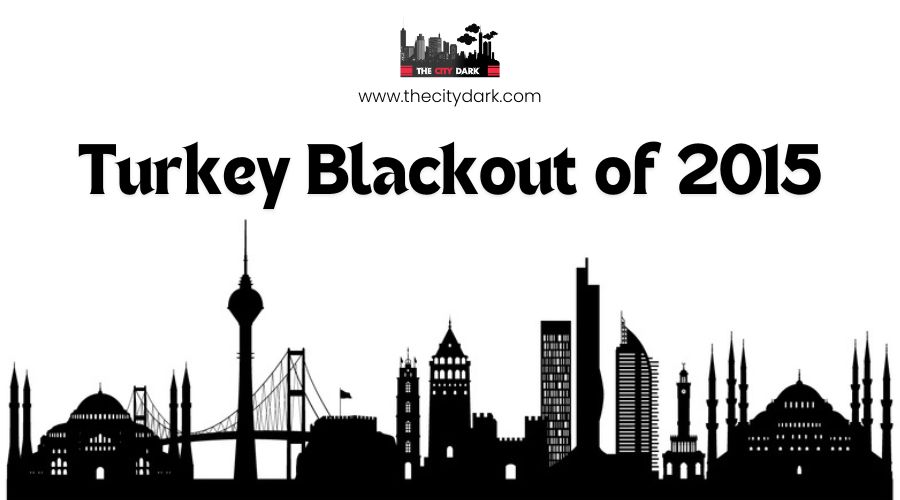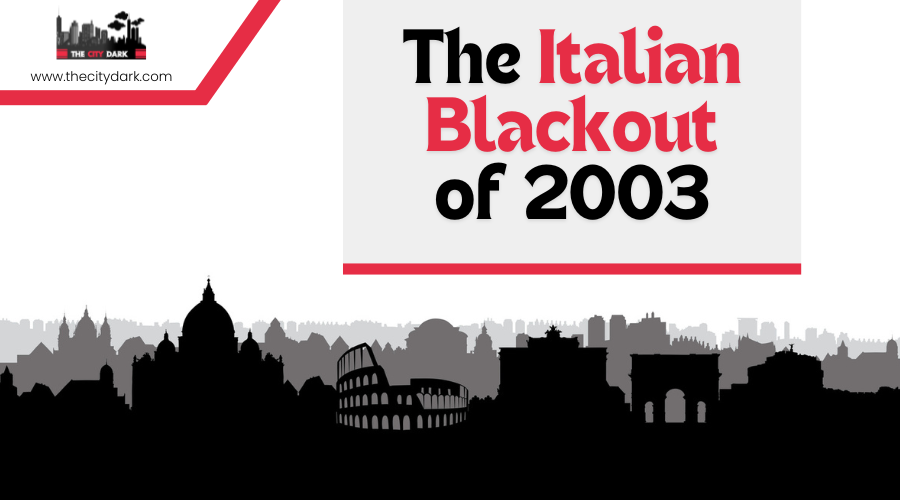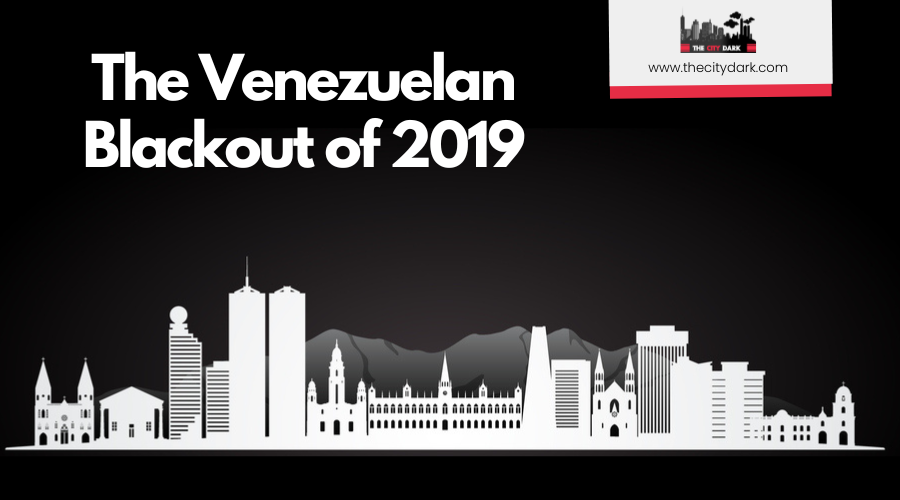Turkey Blackout of 2015

On March 31, 2015, over 40 provinces in Turkey, including major cities like Istanbul and Ankara, experienced the worst power outage in 15 years, causing widespread disruption. Public transport came to a halt, emergency services struggled, and businesses faced losses estimated at $700 million. The government swiftly restored 90% of Istanbul's power within three hours, but the incident highlighted significant vulnerabilities in the nation's energy infrastructure. What were the causes of this massive blackout, and how did the public respond? Let's explore further.
Nationwide Impact
On March 31, 2015, a nationwide blackout swept across Turkey, plunging over 40 provinces, including Istanbul and Ankara, into darkness. It was one of the country's most significant power outages in 15 years. Public transport systems were thrown into chaos as metro services halted entirely, and malfunctioning traffic lights caused severe congestion on the roads, affecting millions immediately and intensely.
Businesses faced substantial disruptions, leading to a considerable economic impact. Emergency services struggled to operate effectively, further complicating the situation. Authorities responded swiftly, prioritizing vital services and restoring 90% of Istanbul's power within three hours.
Energy Minister Taner Yıldız addressed the nation, acknowledging public frustration and emphasizing the gravity of the situation. Social media buzzed with concerns over the reliability of Turkey's energy infrastructure, with citizens questioning how such a massive blackout could occur and demanding answers.
The widespread frustration and economic implications underscored the blackout's profound nationwide impact. It highlighted vulnerabilities in the energy grid and the need for robust infrastructure and swift response mechanisms.
Timeline of Events
Understanding the sequence of events during the Turkey Blackout of 2015 reveals the crisis's magnitude and the subsequent response. At 10:36 AM on March 31, 2015, Turkey experienced a nationwide blackout, impacting over 40 provinces, including major cities such as Istanbul and Ankara. This sudden power loss caused significant disruptions in public transport and emergency services, marking it as the worst power cut in Turkey in 15 years.
Restoration efforts began immediately, with authorities working tirelessly to restore electricity. By early afternoon, around 80% of Istanbul had regained power within three hours of the initial outage. Energy Minister Taner Yildiz announced that investigations were underway to determine the cause of the blackout, considering possibilities such as technical failures or potential sabotage.
Prime Minister Ahmet Davutoglu established a crisis cell at the energy ministry to manage the situation, underscoring the urgency to restore power and mitigate the blackout's impact. While the exact cause remained unclear, the swift restoration efforts and coordinated response demonstrated the resilience and adaptability of Turkish authorities during this unprecedented crisis.
Government Response

The government's swift response to the Turkey Blackout of 2015 is commendable. Prime Minister Ahmet Davutoglu established a crisis cell at the energy ministry, and Energy Minister Taner Yildiz provided consistent updates on power restoration efforts. Authorities prioritized critical areas, assuring citizens that electricity would be fully restored soon. Most of Istanbul regained power within three hours.
Crisis Management Measures
The Turkish government's decisive crisis management during the massive blackout on March 31, 2015, showcased their ability to act swiftly and systematically. A crisis cell was immediately established at the energy ministry to handle the situation. Prime Minister Ahmet Davutoglu assured the public that all potential causes, including sabotage, were being thoroughly investigated to determine the outage's origin.
Energy Minister Taner Yildiz prioritized restoring electricity, providing regular updates to keep the public informed. Authorities initially focused on restoring power in high-density areas like metro stations to minimize disruption to public transport and ensure commuter safety. This strategic approach was crucial in effectively managing the crisis.
The government's efforts were both swift and systematic, aiming to reassure the public that large-scale outages are rare and that measures were being taken to prevent future occurrences. Full power restoration was anticipated shortly, with officials working tirelessly to normalize the situation as quickly as possible. Their proactive measures underscored the importance of effective crisis management in maintaining public confidence.
Official Statements Issued
As the Turkish government's crisis management measures were in full swing, officials swiftly addressed the public. Prime Minister Ahmet Davutoglu assured citizens that all possible causes of the massive blackout, including terrorism, were being thoroughly investigated. His prompt response aimed to quell public concern and underscore the government's vigilance.
Energy Minister Taner Yildiz emphasized the urgency of restoring power, particularly in densely populated areas like metro stations. He highlighted that a crisis cell had been established at the energy ministry to coordinate response efforts, demonstrating a proactive approach.
The Turkish Electricity Transmission Company launched investigations to pinpoint the exact cause of the outage. Although no immediate connection was established to the concurrent hostage situation, the company's swift action illustrated their commitment to transparency and accountability.
Reports indicated that 80% of Istanbul had power restored within three hours, showcasing the government's dedication to rapid restoration efforts. These official statements and actions were essential in maintaining public trust and managing the chaos during the massive blackout.
Restoration Efforts Timeline
Amid the chaos of the massive blackout on March 31, 2015, Turkey's government launched immediate restoration efforts focused on vital areas. By the afternoon, Energy Minister Taner Yildiz and his team had already made significant progress, restoring nearly 15% of power across the affected regions by 1:00 p.m. This initial success highlighted the efficiency of their response strategies.
In Istanbul, the government's swift action paid off remarkably well. Within three hours, approximately 80% of the city had its electricity back, demonstrating the effectiveness of the restoration efforts. Prioritizing key areas ensured essential services were quickly operational, minimizing the impact on residents and businesses.
To manage the situation, a crisis center was established at the energy ministry. This center was instrumental in coordinating the rapid response and ensuring every step was closely monitored. Energy Minister Yildiz reassured the public that full power restoration would be achieved shortly, emphasizing the government's commitment to resolving the blackout swiftly. Thanks to these diligent efforts, Turkey was on its way to overcoming one of its most significant power outages.
Restoration Efforts
Restoration efforts began on the afternoon of March 31, 2015, with a focus on quickly restoring power to crucial services and busy areas like metro stations. Within three hours, 80% of Istanbul had its electricity restored, demonstrating the swift response of authorities. The Turkish Electricity Transmission Company (TEIAS) prioritized public transport systems to minimize disruptions, while Energy Minister Taner Yildiz and Anadolu Agency provided regular updates to keep the public informed.
Power Restoration Timeline
Efforts to restore normalcy in Turkey commenced promptly after the blackout struck at 10:36 AM on March 31, 2015. The Turkish Electricity Transmission Company (TEIAS) immediately mobilized to address the power outage. Within two hours, approximately 15% of power was restored in affected areas, demonstrating the effectiveness of their rapid response. By mid-afternoon, significant progress had been made, with around 80% of Istanbul's electricity reinstated. Special attention was given to crowded areas, particularly metro stations, to ensure public transport could resume safely and efficiently.
The initial priority was to stabilize essential services. TEIAS coordinated closely with local authorities and utility providers to systematically bring the grid back online. By 8 p.m., full power restoration was achieved, more than nine hours after the initial outage. The rapid actions taken by TEIAS and their strategic focus on high-density areas helped minimize the blackout's impact on daily life and business operations. The coordinated efforts highlight the importance of robust emergency response plans to effectively manage such unprecedented events.
Emergency Services Challenges

Managing emergency services during the blackout presented significant challenges due to disrupted communication systems and malfunctioning traffic lights, leading to severe road congestion. The chaos on the streets was palpable, with traffic snarls complicating rescue efforts. Major cities were thrown into disarray as public transport systems ground to a halt, necessitating the dispatch of rescue teams to assist stranded subway passengers, further complicating the crisis.
Delays in reaching affected areas were exacerbated by power outages blocking access to vital infrastructure, where every second counted. The lack of functioning communication systems made coordination even more challenging.
The Turkish Electricity Transmission Company played a crucial role in prioritizing restoration efforts for essential services to ensure that emergency response units could operate effectively. As power was gradually restored, these efforts allowed emergency services to regain operational capability.
Effective crisis management required coordination among multiple agencies, highlighting the importance of robust emergency response plans and resilient communication systems, especially during extensive power interruptions.
Suspected Causes
The Turkey Blackout of 2015, which occurred on March 31st, had multiple suspected causes under investigation. Initially, it was attributed to a technical issue within the electricity transmission network, with reports indicating a glitch that severely disrupted power distribution nationwide. However, this explanation did not fully satisfy all parties involved in the inquiry.
Authorities also considered the possibility of sabotage. Although this theory was never confirmed, it was not dismissed, leaving the exact reasons for the outage uncertain. Prime Minister Ahmet Davutoglu acknowledged the lack of clarity and emphasized that all scenarios, including external interference, were being examined. This uncertainty kept the public anxious, especially since the blackout coincided with a high-profile hostage situation in Istanbul, raising suspicions of a potential link between the two events.
Investigations led by the Turkish Electricity Transmission Company (TEIAS) focused on evaluating the integrity of the power lines to identify any vulnerabilities in the energy infrastructure that could have contributed to the massive outage. Despite these efforts, pinpointing the exact causes proved to be a complex task for the authorities.
Economic Consequences
Estimating the economic consequences of the 2015 Turkey Blackout reveals a staggering impact, with losses reaching at least $700 million. This blackout caused widespread disruptions across various sectors, highlighting vulnerabilities in Turkey's energy infrastructure.
- Industrial Operations: In Izmit, a manufacturing hub, the power loss halted production lines, resulting in substantial financial losses for businesses dependent on continuous operations.
- Public Transport: The shutdown of public transportation systems caused extensive delays, preventing commuters from reaching their workplaces and thus significantly affecting nationwide productivity.
- Investor Confidence: The reliability of Turkey's energy infrastructure was called into question, potentially leading to decreased investor confidence in the energy sector and impacting future investments.
- Energy Policy Scrutiny: The economic consequences led to increased scrutiny of energy policies. The outage underscored the urgent need for investments in infrastructure to prevent future disruptions and maintain stability.
The blackout's direct economic impact was profound, but the long-term implications could be even more significant. Robust energy infrastructure and a reliable power supply are critical for maintaining economic stability and growth. The 2015 blackout served as a wake-up call, emphasizing the need for urgent reforms in Turkey's energy policies and infrastructure investments.
Public Reactions

During the 2015 Turkey Blackout, public reactions were immediate and intense, with the hashtag #BuradaElektrikYok (There is no electricity here) trending on social media. Widespread frustration was evident as people dealt with prolonged power outages. Conflicting reports about the blackout's cause exacerbated confusion and anxiety, especially during a politically charged period.
Public dissatisfaction was visible everywhere. Concerns about Turkey's energy infrastructure emerged, with many questioning the government's crisis management capabilities. The absence of reliable information increased public wariness and distrust regarding energy policies.
The blackout impacted not only homes but also public transportation systems, causing significant disruptions. This led to massive inconveniences, heightening public frustration. People were stuck in traffic, unable to reach work or school, further amplifying their dissatisfaction.
The event prompted broader discussions about the need for significant improvements in energy infrastructure. Citizens began demanding better management and more robust systems to prevent future occurrences, signaling a shift in public perception towards energy management.
Lessons Learned
The 2015 Turkey Blackout exposed significant vulnerabilities in the nation's energy infrastructure, underscoring the impact of the 2013 privatization of power distribution grids, which introduced market instability. The blackout, affecting over 40 provinces, highlighted the need for improved management and more robust emergency services.
Key lessons from this event include:
- Improved Grid Management: The event underscored the necessity for enhanced energy grid management to prevent cascading failures. Implementing stringent oversight and modern technology can help stabilize the grid.
- Strengthening Emergency Services: The crisis emphasized the importance of having robust emergency services. Rapid and efficient responses are crucial in densely populated areas to minimize disruption and restore normalcy.
- Enhanced Communication Strategies: Effective communication during outages is critical. The government's response indicated a need for clear and rapid information dissemination to keep the public informed and calm.
- Diversifying Energy Sources: Relying on a single type of power generation is risky. Diversifying energy sources can mitigate future risks and ensure a more reliable supply.




